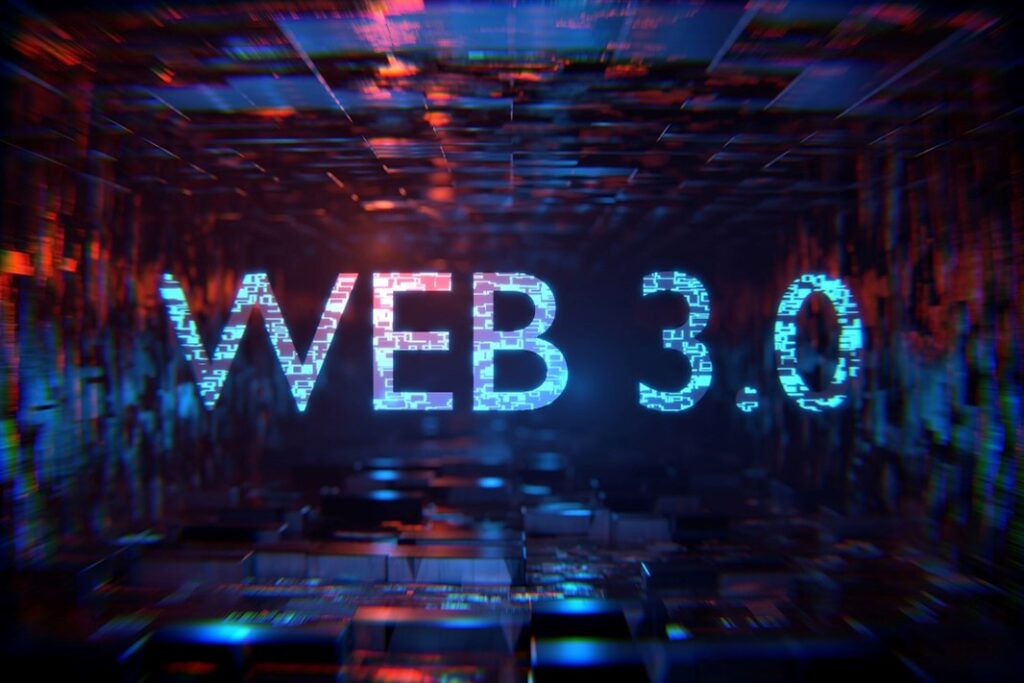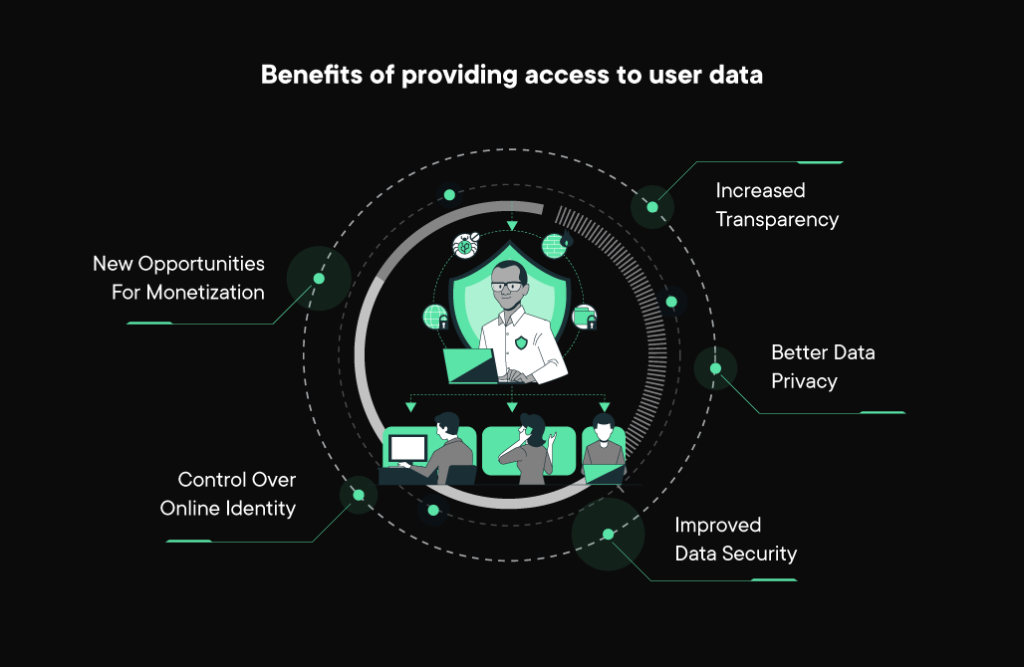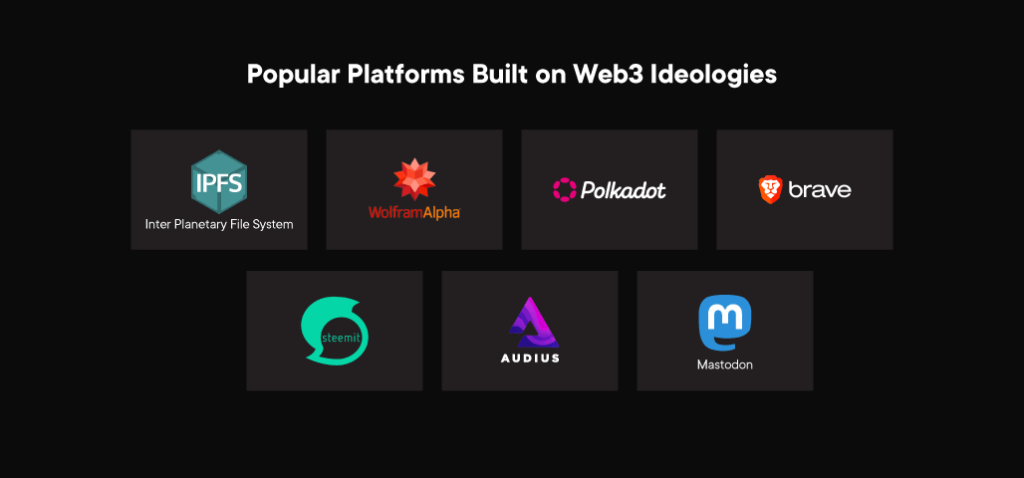What is Web3? What are its Use Cases?

In recent years, we have witnessed a massive shift towards digitization across various industries, from finance to healthcare, education, and entertainment. Digital Transformation has brought numerous benefits, such as convenience, efficiency, and accessibility. However, it has also created new challenges, such as centralization, data breaches, and privacy concerns.
Here comes Web3! It’s a new generation of the internet that promises to address these challenges by leveraging the power of decentralized networks. In this blog, we will explore the exciting world of Web3 and its potential to revolutionize how we interact with cyberspace. So, buckle up and get ready to uncover the future of decentralized digitization with Web3!
What is Web3?

The current web we use to access and share information is the 2nd generation. In the 2nd version of the web, the content we produce is saved in a central server controlled by an authority. Various data ranging from emails, health tracker data, shopping interests, social media posts, photos, entertainment, and choices to web browsing patterns and other forms are the data collected on a regular basis from the user and saved under a centralized service provider storage where users have no control over their data.
The true ownership of this data has never been owned by the user but rather by the central authority controlling the service. Web3, which is the 3rd generation of the web, will solve this critical ownership problem by shifting the control of content from central authority back to the users. Users have complete control over what they share and with whom they share and can completely revoke the permissions at any time. Web3 is all about less trust and more truth.
How will Web3 be different from Web2?
The real necessity of Web3 – Let’s look at real-life use cases that have facilitated the design thinking towards web3:
Use Case 1: Many of us have played or heard of the popular flash-based game called Farmville, which was designed by Zynga on Facebook. In 2020 after 11 years of service, the development has been ceased leaving millions of fans of the game unable to access the game assets they’ve purchased over the years. Web3 can solve this problem by transferring the ownership of those assets as limited-time collectibles to the fans who bought them on an open decentralized marketplace.
Use Case 2: The fundamental problem that occurred when the popular social media site Orkut got shut down, resulting in millions of users losing access to their photos and posts shared over the platform, which are actual memories from the early days of the web in the 2000s. Web3 can solve this problem by bringing back the control of user data (posts, media) to the users and freedom to take the data to their platform of choice by making it interoperable.
Use Case 3: Free speech is a powerful principle of democracy that should be censorship resistant. There are many cases of social media accounts getting banned just because of criticizing authority of its flaws even though when it’s the truth, which indicates the suppression of the free flow of open speech. Essentially the accounts have been permanently locked in their previous posts on social media. A web3 based existent decentralized social media platform like Mastadon solves this problem where users can control the data they publish and interoperate with other platforms of their choice where there should always be one single source of truth that is censorship resistant.
What are the benefits of providing access to user data?

Healthcare data, for instance, can be shared with various medical sources for advancements in medical research, where the data exchange will be peer-to-peer. Our photos & media, meanwhile, can be permitted to be uploaded to Facebook, Instagram, Flickr, etc., without uploading individually. And the most important aspect of any web3 application should be the incentive structure the user can benefit from companies accessing their data. Users by choosing and providing access to their data should be incentivized for the contribution, which is clearly lacking in the web2 world.
Is Web3 based on blockchain?
One of the misconceptions most people believe is that web3 is completely blockchain-based. But the truth is that web3 is a culmination of technologies, whereas blockchain is a mere part of web3. For instance, we imagine blockchain like Bitcoin/Ethereum provides a solid trustless, permissionless cross-border payment between individuals without any central banking authority to control the transaction. Blockchains are excellent use cases for web3 where public platforms like incentive structure, decentralized access, decentralized finance, NFTs, and DAOs can be built to support the principles of web3 ideology. Even standardized technologies can be part of a web3 application development, given it implements basic principles of user privacy, ownership, and censorship-resistant data flow.

Web3 and Gaming Applications
As we see a trend towards adaptation of web3, we will see more games built around incentivizing the users. Game designs will make use of releasing limited game assets as collectible NFTs to its fans, thereby making them a partner in the development process and creating a win-win scenario when the game performs well for both the companies and fans alike. Users can be assured that they will still own the game assets as collectibles even though the game shut down in the future.
Web3 and Defi (Decentralized Finance)
The true potential of Finance will be unlocked when more financial products are implemented around the principles of Web3 and Decentralized Finance. Already existing applications like Uniswap and Airswap have taken the first steps in the evolution of Web3 financial products. Imagine finance becoming peer-to-peer between any two parties in the world where the transaction rules are governed by a contract running on a trustless network autonomously. This removes a whole lot of unnecessary paperwork and intermediatory fees and, most importantly, saves a lot of time for instantaneously accessing various financial products, even in remote places of world where banking is a luxury. Decentralized cross-border payments are the future.
Web3 and Metaverse
The Metaverse is a digital platform that provides an immersive experience to users using AR and VR technologies. We can view this as a 3D web where users can have 3D interactions with other users, bots, and applications. Metaverse as a platform will be there for enhanced social connections. Imagine Facebook as a 2D place where you can add a friend, chat with someone, join a group, etc. The same actions can take place in Metaverse in 3D with enhanced user experience and social connections. Web3, in some ways, will be a component of this digital social experience by powering apps that are censorship resistant, decentralized, and secure.
Web3 and AI
Eventually, AI is the umbrella term where the full potential of Web3 principles comes into play. By owning the data in various forms, users will have complete control over who to give access to, thereby getting an incentive for doing so. Imagine companies building AI models having access to the same reliable and quality data from real users who are willing to participate in their development activity. The users have the right to control the information to share and get incentivized, and the companies have access to golden data to build better AI models which perform well than the ones trained on noisy data. Web3 principles will govern the flow and access of this data by creating a more inclusive environment.
Summing up!
Privacy by design and default, less trust and more truth, whereas decentralized and censorship-resistant ownership is one of the principles of any future Web3 application. An ecosystem where humans/bots/ devices/applications can securely operate on a trustless network can be enabled by following these principles. While Web3 is primarily a concept under development today, some early applications demonstrated its implementation, such as Odysee, a decentralized video-sharing app, and NFT marketplaces where users have the freedom to sell an NFT on a platform of their choice by just connecting their wallet, Mastadon Social Network, etc. In Web3, we can even imagine building decentralized machine learning models that can perform more efficiently.